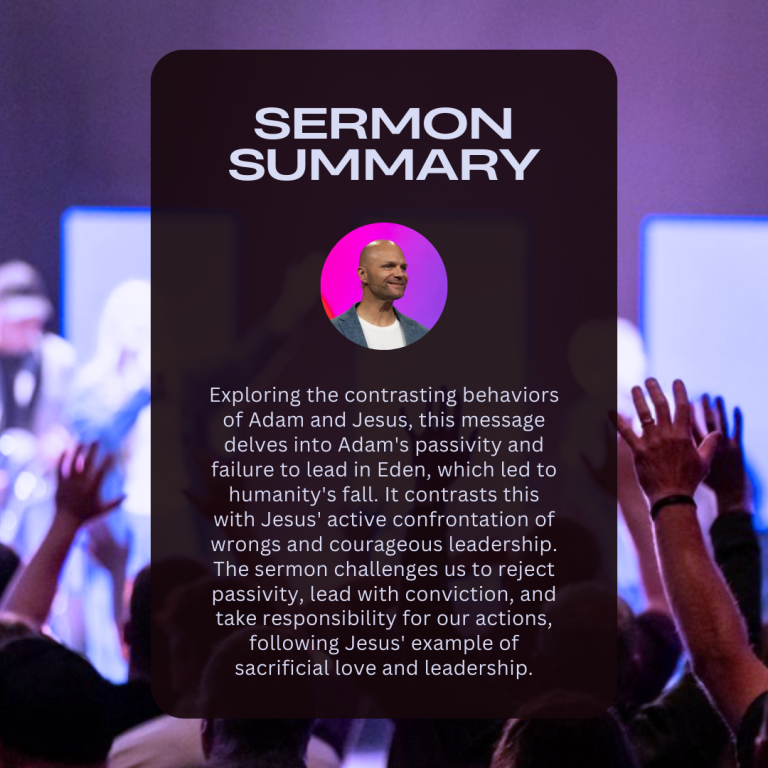Crafting a compelling sermon doesn’t end when the sermon is delivered. That’s where Sermon Shots steps in, providing essential tools like sermon recaps and summaries to help congregants absorb and reflect on the core message. By creating a clear sermon outline, these resources transform a Sunday message into a lasting impact throughout the week.
Why is an effective sermon outline so crucial? It condenses the main points of the sermon, making it easier for listeners to revisit and grasp key insights. This way, your congregation benefits from a structured recap, reinforcing their understanding and personal connection to the message. Whether you’re recapping for personal study or sharing insights with others, Sermon Shots’ post-sermon tools ensure that you capture and communicate the essence of the sermon effectively. So, if you’re aiming to deepen your congregation’s engagement, integrating sermon outlines is a smart move. Let this be your go-to strategy to keep the conversation going long after Sunday.
Understanding Sermon Shots Tools
Navigating the sea of insights and messages delivered during a sermon can be a challenge. We’ve all been there: inspired by the moment, yet struggling to recall the core message by the following week. Sermon Shots tools are here to bridge that gap, offering clarity and recall post-sermon. These tools are designed to maximize the sermon’s impact by providing a post-sermon outline that congregants can revisit. Let’s take a closer look at these game-changing tools: the Sermon Recap Tool and the Sermon Summary Tool.
Overview of Sermon Recap Tool
The Sermon Recap Tool is like a time capsule for your spiritual journey. It captures the essence of a sermon, distilling it into bitesize insights that keep the message alive long after the last hymn. This tool cues in congregants by providing a comprehensive overview of the sermon, highlighting key themes and messages:
-
Easy Access: With the recap tool, congregants can re-engage with the sermon whenever they need a spiritual refresher.
-
Insightful Reflection: Revisit key points that inspire personal reflection, promoting growth and learning beyond the church walls.
-
Enhanced Understanding: By seeing the sermon in a distilled form, congregants often find new layers of meaning and applicability in their daily lives.
The tool is not just a summary but a guide to deeper understanding and reflection.
Overview of Sermon Summary Tool
Condensing the often expansive teachings of a sermon into a concise, digestible format, the Sermon Summary Tool is your go-to for a quick yet meaningful review. It simplifies the way congregants engage with the sermon by boiling it down to its core elements, making it easier to recall and apply:
-
Condensed Insight: Get straight to the heart of the message without sifting through extensive notes.
-
Practical Application: The focused summary aids in practical application, helping you to live out the teachings daily.
-
Memory Boost: By reinforcing the main points, the summary tool helps with long-term retention, ensuring the message stays fresh and readily available.
In the end, these tools serve as companions for your spiritual journey, helping you to build a strong, foundational Sermon Outline based on the teachings you want to live by. Use them to stay connected, focused, and inspired.
The Importance of a Sermon Outline
A well-structured sermon outline acts like a roadmap, guiding the congregation through the key messages and lessons presented in a sermon. It’s more than just a tool for the speaker; it’s an essential resource for the listeners, helping them absorb, process, and reflect on the teachings long after the sermon has concluded. By providing clarity and structure, a sermon outline ensures that the sermon’s message is both memorable and impactful.
Benefits for the Congregation
Everyone’s been there. You attend a service, hear a powerful sermon, and then struggle to remember the specifics by the next day. This is where a sermon outline steps in as a handy guide. It helps congregants to:
-
Revisit Key Points: The outline highlights the main ideas and themes, making it easy for anyone to go back and review what was said.
-
Engage in Personal Reflection: With the main points laid out, individuals can think more deeply about how the sermon applies to their own lives.
-
Share and Discuss: Having a written summary makes it easier to discuss the sermon with friends and family, providing a starting point for meaningful conversations.
Having a sermon outline is like having a cheat sheet that enhances your spiritual journey and brings the sermon to life outside the church walls.
Improving Engagement
Ever notice how our attention can drift during a long talk? Sermon outlines help keep the congregation engaged. They:
-
Encourage Active Listening: When people know the structure of a message, they can follow along easily and stay tuned in.
-
Facilitate Group Discussions: In community settings, outlines can spark questions and discussions that might not have occurred otherwise. Groups can dive into the sermon’s nuances with a clear guide in hand.
-
Prompt Interactive Involvement: Equipped with the outline, congregants become active participants in their spiritual learning, much like having a roadmap for a journey encourages exploration along the route.
Think of sermon outlines as the bridge connecting the sermon to everyday life—strengthening community ties, boosting understanding, and deepening relationships within the church.
Steps to Create an Effective Sermon Outline Using Sermon Shots Tools
Turning a powerful sermon into a concise outline can make a big difference for your congregation. Sermon Shots tools help capture the essence of your sermon and present it in a way that’s easy for everyone to understand. Let’s dive into the steps that make the process straightforward and effective.
Gathering Key Points from the Sermon
Identifying core messages is the first step in creating a meaningful outline. But how do you capture the essence of your sermon?
-
Listen Actively: Pay attention to recurring themes and messages that stood out during the sermon.
-
Summarize with Brevity: Condense each point into a clear, simple sentence. Aim for concise summaries without losing the message’s impact.
-
Use Bullet Points: Organize the key ideas into a bulleted list for easy reference and quick scanning.
Think of the main points as the backbone of your outline. If your sermon was the whole cake, these are the ingredients that make it.
Integrating Quotes and Scriptures
Quotes and scriptures add depth and context to your sermon outline. They’re like the spices that bring out the flavors of your message.
-
Select Relevant Quotes: Choose quotes that echo the sermon’s core message. Ask yourself, does this quote reinforce what was preached?
-
Include Scripture References: Always list the scripture references used in the sermon. This not only provides authenticity but encourages further study.
-
Maintain Balance: Don’t overwhelm your outline with quotes and scriptures. Aim for a balance that enriches rather than distracts from the key points.
Adding quotes and scriptures can turn a simple outline into a treasure trove of insight and inspiration.
Formatting Your Outline for Clarity
Formatting might seem like a minor detail, but it’s crucial for readability. An outline well-organized is like a map that’s easy to follow.
-
Use Headings and Subheadings: Break down sections with clear headings to guide readers through the message.
-
Consistent Font and Size: Stick to one font and size for a uniform appearance that’s easy on the eyes.
-
Highlight Key Points: Use bold or italics to make crucial information stand out.
Good formatting is the bridge that connects content with clarity, making sure your congregation can easily grasp and reflect on the sermon’s key takeaways.
These steps create a sermon outline that’s not only informative but also engaging, ensuring your congregation can easily recall and reflect on the teachings long after the sermon is over.
Practical Applications of Sermon Outlines
Sermon outlines are more than just a pastor’s tool; they become a blueprint for understanding and applying weekly messages. By tapping into the structure of a sermon after it’s delivered, congregations can deepen their connections to the teachings and apply them in various settings. Below, we’ll examine some practical uses for sermon outlines that will enrich your church community.
Utilizing Outlines in Small Groups
Using sermon outlines in small group sessions can turn your gathering into a dynamic Bible study. The outline serves as a map that guides discussions, ensuring everyone stays on track. It offers a shared reference point, making it easier for members to connect with each other and the sermon’s core ideas. Imagine your small group diving into the week’s topics armed with structured notes that elevate the dialogue. Here are some practical ways to use outlines in your small groups:
-
Discussion Starter: Begin by reading a key point from the outline and let members share personal reflections or related Bible passages.
-
Question and Answer: Encourage group members to ask questions based on the outline, fostering a deeper understanding.
-
Personal Challenges: Use the sermon outline to set personal goals or challenges for group members, encouraging them to apply teachings in their lives.
Sharing Sermon Outlines with the Congregation
Communicating sermon outlines effectively with the entire congregation can amplify the impact of the messages. Not only does it help individuals ponder the week’s sermon more comprehensively, but it also nurtures a sense of community by supplying everyone with the same resource. Consider these strategies to distribute sermon outlines:
-
Printed Copies: Distribute them after services or include them in the church bulletin for easy access.
-
Digital Sharing: Upload outlines to the church website or send via email, ensuring even those who miss the service can stay connected.
-
Social Media Posts: Share key points on social platforms to spark online dialogue and reach a broader audience.
By integrating sermon outlines into everyday aspects of church life, we can amplify their transformative power, making Sunday sermons not just a once-a-week experience but a continual journey of growth and connection.
Common Mistakes to Avoid
Crafting a sermon outline that resonates with your congregation is key. But how do you avoid common pitfalls along the way? Let’s explore some mistakes you should watch out for when using Sermon Shots to create impactful post-sermon outlines. These insights will help ensure that your audience leaves with a clear understanding and meaningful connection to the sermon.
Overloading with Information
Ever felt like information was coming at you like a firehose? That’s what happens when a sermon outline is overloaded. It’s tempting to include every single detail from the sermon, but more isn’t always better. Brevity and clarity are crucial.
-
Keep it simple: Highlight the sermon’s key points instead of listing everything. This helps your audience focus on the most important messages without getting lost in a sea of words.
-
Focus on essentials: Ask yourself, “What are the top three takeaways the congregation needs to remember?” This ensures your outline is concise and impactful.
Think of your sermon outline as a lighthouse guiding your congregation through the waves of information, providing just enough light to lead the way without blinding them.
Ignoring the Audience’s Needs
Imagine giving a speech in a foreign language to an audience that doesn’t understand it. That’s what happens when you ignore your audience’s needs while creating a sermon outline. Each congregation is unique, and your outline should reflect that.
-
Know your audience: Tailor your outline to match the congregation’s understanding and interests. Consider their level of familiarity with the sermon topic.
-
Make it relatable: Use language and examples that connect with your audience’s everyday experiences. This personal touch helps them relate to the message on a deeper level.
Think of outlining your sermon like crafting a custom suit rather than grabbing one off the rack. It should fit your audience perfectly, enhancing their understanding without causing confusion.
By avoiding these common pitfalls, you ensure your sermon outline is not only a reflection of the message but also a bridge that connects the sermon to your congregation’s hearts and minds.
Outline Your Sermon
Outlining a sermon after it’s delivered offers an invaluable resource for deepening understanding and engagement. Using the sermon outline tools provided by Sermon Shots, congregations can easily revisit key messages and gain clearer insights into the teachings. This approach transforms a single sermon into a lasting educational tool.
Encourage your congregation to embrace these outlines for a richer experience. Dive into the summaries and recaps to find new meanings and perspectives. Share the insights with others in your community to foster meaningful discussions.
Consider how these tools can enhance future interpretations and guide deeper explorations of faith. Thank you for taking the time to explore these methods. Feel free to share your thoughts and insights on how you’ve used sermon outlines in your reflections.





